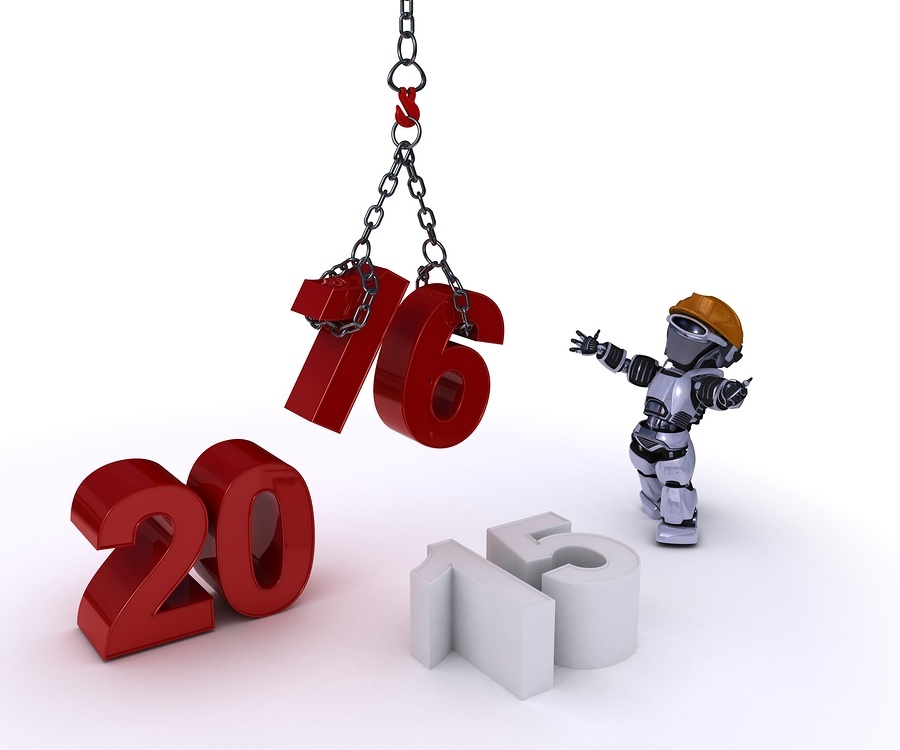Our New RPA Product Line – Spotlight – has Arrived!
Share at:

We’re pleased to announce the release of our new product line, v2016.1 - affectionately named Spotlight by our development team. Last spring our CEO, Daniel Dines, challenged the team to make 2016 the year when RPA becomes a new world of automation. Spotlight meets the challenge with advanced technology and innovative product features that deliver a new level of automation capabilities to our customers.

We’ve always maintained two tracks of RPA technology investment: our research & innovation teams forge ahead in the fields of cognition, digitalization & computer vision; our development teams turn those advances into enterprise-ready RPA products; for example, our unmatched Citrix automation.
With Spotlight, our customers will be able to rapidly scale and tackle large volumes of work with new autonomous robotic features and a robust orchestration platform.
Collaborative Inno**vation = Spotlight**
All our product innovations are heavily influenced by feedback and discussions with strategic partners and customers during early beta testing - and Spotlight is no exception. Determined to provide very intuitive and effective product features for higher automation volumes, by the early summer of 2015 the development team was actively collaborating in the following areas:
Robotic Precision (RPA & Citrix): high work volumes are dependent upon the efficiency of autonomous automation, which in turn requires extremely precise automation solutions in order to minimize exceptions.
This is particularly true for RPA & Citrix: many of our customers have to automate across dozens of Citrix-enabled ERP systems - without going behind the firewall. In Spotlight, automation precision has moved very close to our goal of 100% accuracy.
Front Office & Back Office Robotic Specialization**:** discussions with strategic partners and customers made it clear how important it is to have highly specialized robots to handle the different business process characteristics of front office and back office operations. Using their feedback, the speed of our Front and Back Office robots is faster and memory management is improved. Front Office robots are easier and more intuitive for employees to use and manage.
Work Orchestration: high volume process automation can only be achieved if large numbers of work files are accurately assembled and addressed by properly queued pools of autonomous robots. UiPath Orchestrator is a completely re-architected server with precisely those capabilities - and many more. Designed for use with both types of robots, It has an intuitive management console; highly configurable log files for compliance and sophisticated release management and process monitoring capabilities.
Product Line Overview
The Spotlight product line is comprised of:
UiPath Studio: the extensible and industry standard process designer where business users can develop and map end-to-end processes without code, on a highly visual drag and drop diagram model. UiPath automates - without discrimination - any application and integrates with any platform.
UiPath Front Office Robot: software robots programmed to execute processes modeled with UiPath Studio. Based on the use cases the robots can be:
UiPath Back Office Robot: provides a robotic workforce of autonomous software robots programmed to run unattended and automate any number of back office activities, around the clock, with exceptional speed and precision. The back office robot can be remotely controlled from a web console and it is usually deployed in a virtual machine.
UiPath Orchestrator: is a scalable **robotic process automation** server fully integrated and equipped with centralized instrumentality for enterprise class management, security, compatibility, support and auditability.
Product Features
UiPath Studio: key features for this product include:
Highly Productive, Integrated Environment: an environment in which process modelling is highly visual and supported by an integrated framework of tools, wizards, templates and pre-built actions for process automation.
Process Mapping: a Visio-like designer is used to map the steps of a business process into a flowchart diagram.
Screen Recorder: a highly efficient, error-free alternative to manually diagramming process steps and user actions (e.g. copy/pasting text or selecting checkboxes).
Visual Business Rules: modelled business processes visually depict business rule decision points such as diamond or multiple choice branches.
Built-in Process Actions: actions are the building blocks of process modeling. The Process Designer includes a robust library of pre-build actions, which can be dragged and dropped into process diagrams.
Online Store: additional pre-built workflow actions, built by the Process Designer developer/user community, can be installed from UiPath's online gallery. You can design your own actions and add them as custom packages.
Integrated Debugger: provides visual step-by-step execution, breakpoints and the highlighting of target elements, useful for error checking.
Automatic Deployment: distributing your processes is now easier. You can publish them to a shared location or to UiPath Orchestrator with only one click. Robots will afterwards receive the processes from UiPath Orchestrator or collect them directly from the shared location.
Revision Control: UiPath Studio integrates with TFS to help teams work at the same process from different locations. Real-time collaboration, access to centralized data repository, history visibility, better project monitoring and easy rollbacking are the key to increased productivity.
Most of the features are common to all types of robots.
Desktop Automation: the automation of rules based process by mimicking human actions on user interfaces of applications.
Web Automation: the automation of rules based process by mimicking human actions on browser interfaces with HTML pages.
Business-Specific App Automation: the automation of rules based processes for specific business applications, such as SAP, Oracle, Siebel, PeopleSoft, SharePoint, Dynamics.
Mainframe Automation: the automation of rules based processes for mainframe applications, by means of customized interfaces with terminal emulators such as: Attachmate, Rumba, IBM PCCOM and BlueZone.
Citrix Automation: UiPath features a powerful image recognition and computer vision engine that is optimized to find images on screen in under 100 milliseconds. The most important thing is that, despite the inherent difficulties of automating Citrix, you can still achieve great productivity, almost the same like in desktop automation.
Computer Vision Based Automation: the automation of rules based process by means of computer vision technique to identify user interface objects. Our Computer Vision Group conducts research and development of algorithms for image processing.
Screen Scraping: the automation of data extraction, with 100% accuracy, from screens of desktop and web applications. Screen scraping is a very important technique in data migration and integration scenarios and has enabled modern apps to talk with legacy apps that don't offer an API.
Text Based Automation: robots can be easily trained to find relevant text and use it as anchors for their actions.
Data Automation: create, filter, merge, structure and analyze data. The entire .NET capabilities are integrated in a visual, easy to use way. UiPath Robots are able to understand and operate with any Visual Basic expressions and functions.
Web Automation & Scraping: automate web apps or extract pattern based data that spans on multiple pages.
Email Automation: whether it is Outlook or Exchange or any other email provider, robots can receive, read or send email. This is useful for scenarios where work is assigned using emails.
Office Automation: many scenarios include Word or Excel automation. Text or data can be pulled in or out of those applications. To facilitate working with the most common Office apps you can integrate actions that know how to read or write any kind of Office document format.
IT Automation: automate IT management and configuration tasks by integrating PowerShell commands into workflows with simple cmdlets or more complex scripts.
Invisible Automation: UiPath runs in the background while users pull up new screens and do other work. Automation without disturbing the user, works when the applications are hidden.
UiPath Front Office Robot: key features for this product include:
Agent Assisted Robot Mode: these robots are capable of executing business actions when certain events or agents inputs are triggered. These agent assisted robots share the same workstation with a human employee, reducing average handling time (AHT) and increasing agent productivity.
Run Processes Under Locked Screen: the Robot can run automated processes behind a locked screen, improving data privacy.
UiPath Back Office Robot: with the exception of Agent Assisted Robot Mode, this robot shares all the key features of Front Office Robot – plus the following:
Robotic API, RESTful web service: these robots expose a REST service endpoint which you can use to control processes from external applications and remote systems. A simple API allows you to leverage Robot execution power into your own application or trigger it remotely.
Auto-login Windows Session: these robots can auto-login a Windows session and run automated processes in a completely unattended deployment.
Batch Execution Mode: these robots can run an automated process in batch mode autonomously – without human intervention.
UiPath Orchestrator: key features for this product include:
Auditable Execution Trace: highly auditable compliance is supported by robot log files, aggregated at the server level, which record end-to-end activity data, easily queried and reported using Elastic Search.
Web Based Control Panel: these server level, web-based management consoles are used for process deployment, monitoring and operational reporting.
Release Management: enables automatic deployment and publishing of a process to the server, and from there to the robot groups for execution.
Process Monitoring: active robots send a constant “heartbeat" to the server as a sign of operational health. Process performance is monitored and alerts can be raised in case of failures.
Remote Control: Back Office Robots are remotely monitored and controlled from the server.
Asset Management: assets are securely stored in the server and distributed to the robots at runtime.
Enhanced Exception Handling: robots are instructed to retry a failed transaction before sending an exception message to the server.
Centralized Scheduling: deployment and scheduling of processes to robot groups is centralized and handled by the control server.
Transaction Queues: this built-in transaction queue system stores work items on the server and makes them available to robot groups.
Integration Queue API: the transaction queue API is exposed to 3rd party systems with a REST based web service. This exposure enables the queue API to integrate with ERP and BPM systems and pool work for groups of robots to complete.
Coming Up Next
Coming up next at this blog: a look at how these innovative features will translate into a “new world” of automation possibilities and benefits for businesses. Watch for it!

Strategic Advisor, Tquila Automation
Get articles from automation experts in your inbox
SubscribeGet articles from automation experts in your inbox
Sign up today and we'll email you the newest articles every week.
Thank you for subscribing!
Thank you for subscribing! Each week, we'll send the best automation blog posts straight to your inbox.



